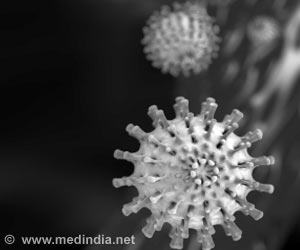The nanomachine can be used in conjunction with a smartphone app to detect any number of diseases and pathogens without the need for traditional medical facilities.

‘Nanomachines could be used to deliver medication precisely where it needs to go at precisely the right time.’





The trick lies in understanding the rules that govern how DNA works, Henderson said. "It''s possible to exploit that rule set in a way that creates advantages for medicine and biotechnology," he said.
The iconic double-helix structure of DNA means that one strand of DNA will bind only with a complementary side. Even better, those compatible strands find each other automatically, like a castle that builds itself. Henderson harnessed those same principles for his nanomachines. The components, once added to water and then heated and cooled, find each other and assemble correctly without any further effort from the individual deploying the machines.
And just how "nano" is a nanomachine? Henderson said about 40 billion individual machines fit in a single drop of water.
The machines act as a diagnostic tool that detects certain maladies at the genetic level. For the recently published paper, Henderson and Mathur, now a postdoctoral research fellow at the Center for Biomolecular Science and Engineering at the Naval Research Laboratory in Washington, D.C., designed the machines to look for signs of Ebola, though the experiments in the study used a mock version of the viral genome and not the real thing. Henderson employed an embedded photonic system that tests for the presence of the target molecules. If the machines sniff out what they're looking for, the photonic system flashes a light, which can be detected with a machine called a fluorometer.
Advertisement
He also envisions a time when similar nanoscale architectures could be used to deliver medication precisely where it needs to go at precisely the right time. These nanomachines, built from DNA, essentially would encapsulate the medication and guide it to its target.
Advertisement
Source-Newswise










